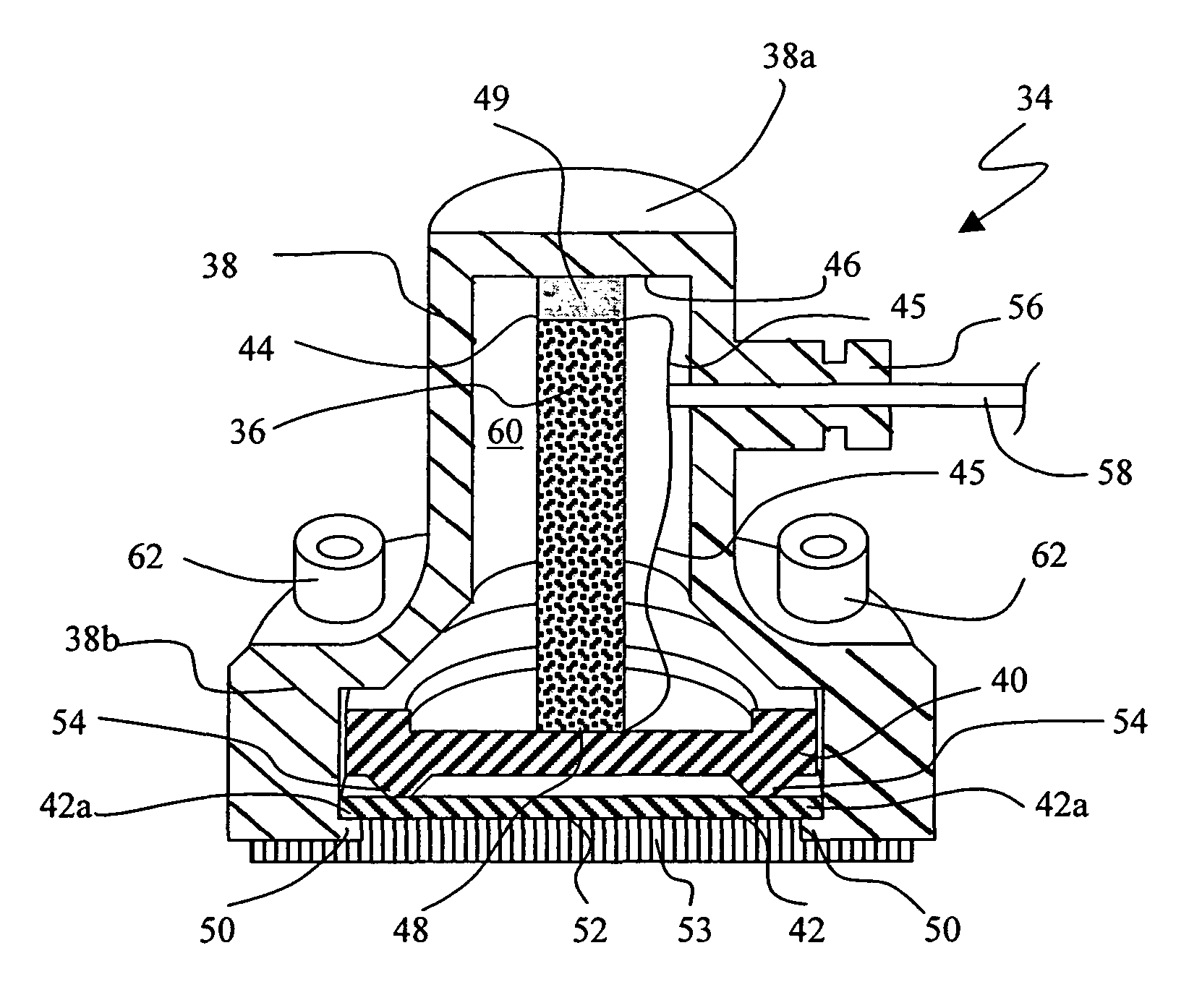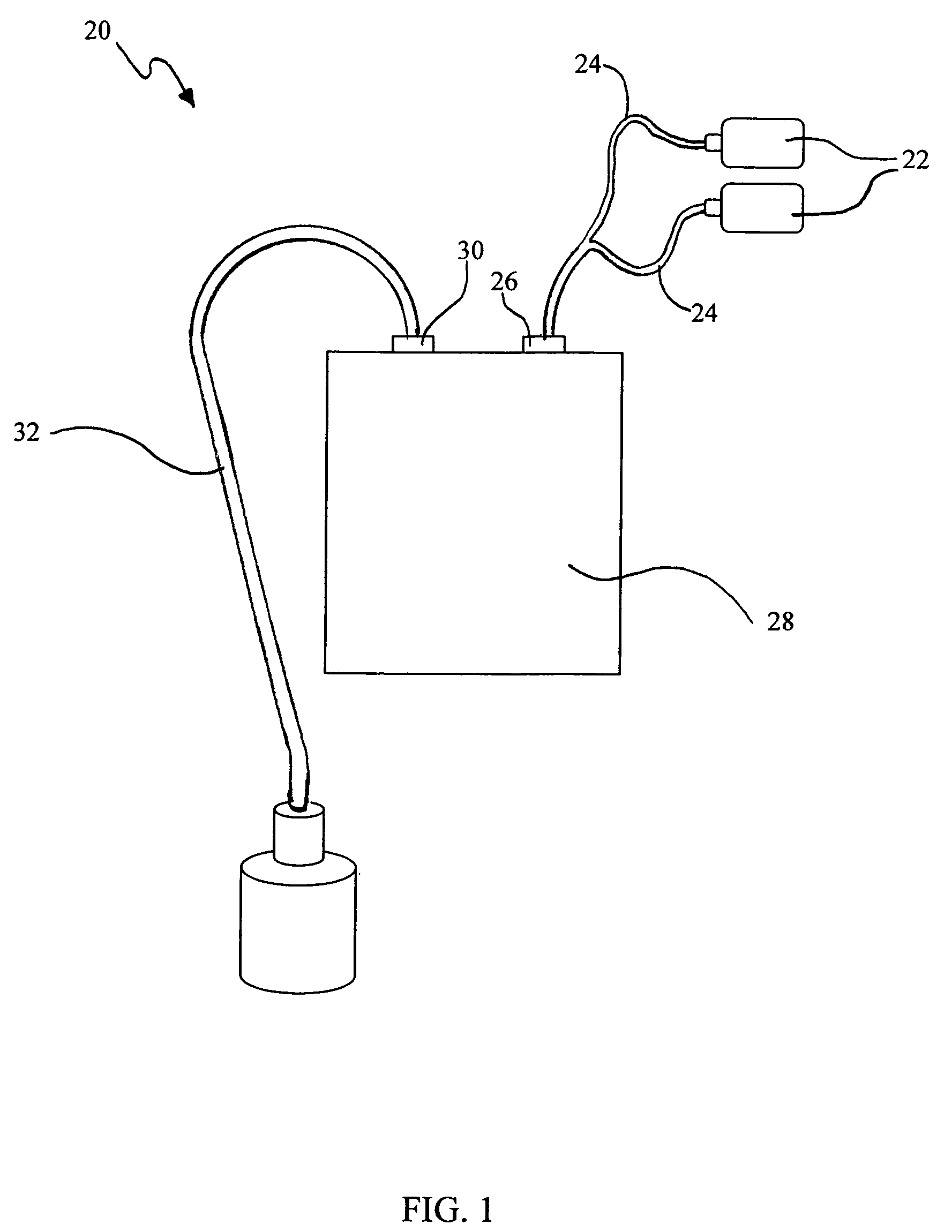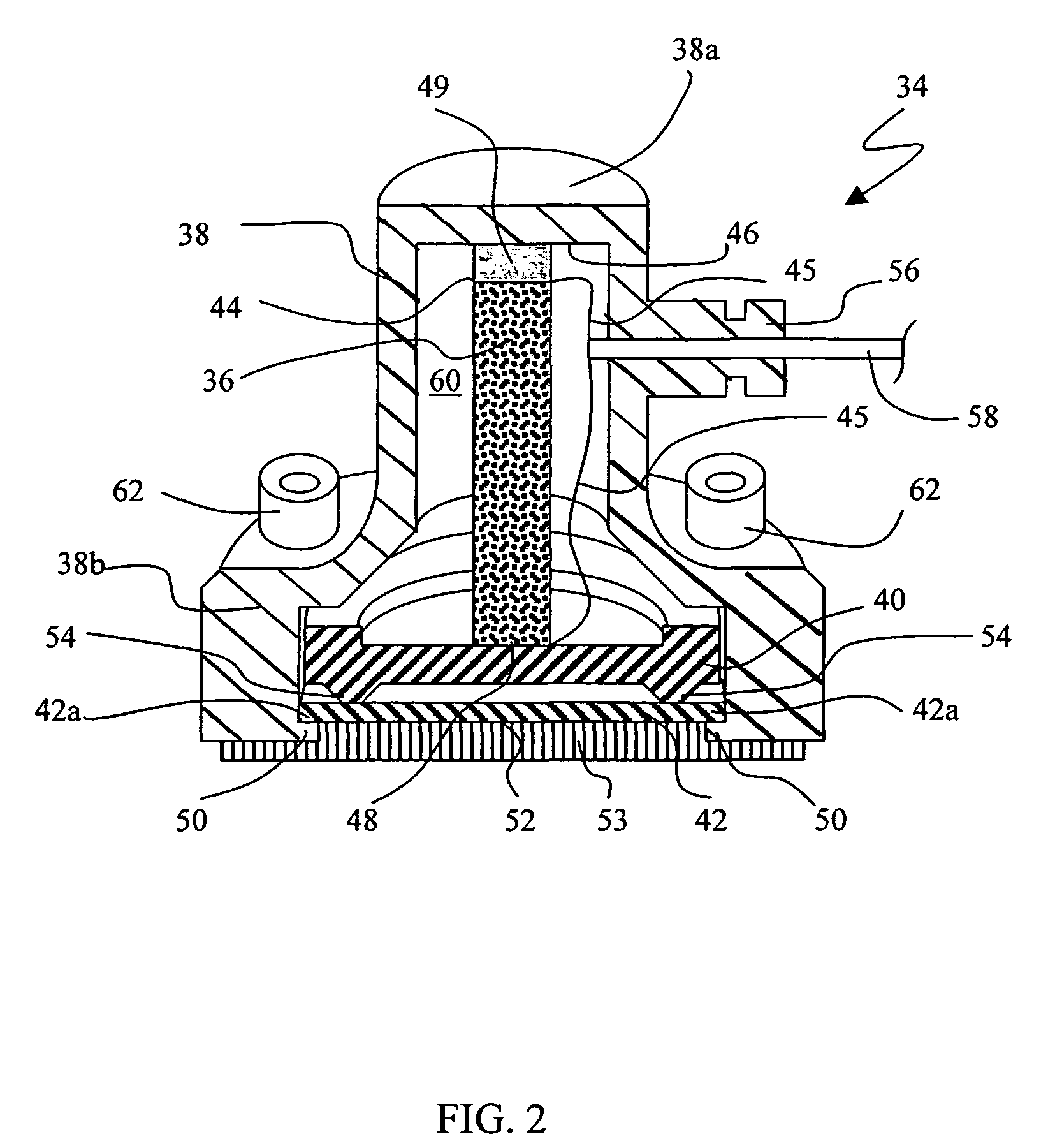High sensitivity noise immune stethoscope
a stethoscope and high sensitivity technology, applied in the field of stethoscopes, can solve the problems of high background noise, inability to achieve effective stabilization without, and patient may be susceptible to shock, and achieve the most effective electromechanical coupling and sensing, the effect of high elastic moduli and low moduli
- Summary
- Abstract
- Description
- Claims
- Application Information
AI Technical Summary
Benefits of technology
Problems solved by technology
Method used
Image
Examples
example 1
[0081]To test the effectiveness of the stethoscope of the present invention, a sound generation system was constructed using a signal generator, a B&K 2706 75-Watt amplifier, and a JBL #K120 speaker. Noise was generated in the band of 0.05-1.0 kHz from a recording of a Blackhawk UH-60 and its level was monitored by a conventional sound level meter set to “A” weighting. The sensor output at different noise levels was recorded using a 3562A HP Signal Analyzer and assessed subjectively by volunteers listening through headphones with CEP's placed under them. As shown in FIGS. 13 and 14, heartbeat sounds were recorded from the chest of a volunteer using the stethoscope of the present invention with 90 dBA and 100 dBA background noise levels respectively. Volunteers reported that they could hear heartbeats with both the 90 dBA and 100 dBA background noise. The electromechanical stack transducer of the stethoscope of the present invention has a relatively low capacitance (100 pF) and there...
example 2
[0082]A stethoscope in accordance with the present invention was customized to the unique physiological and anatomical constraints of the pre-term infant. The device comprised a fingertip applied 10 mm diameter listening head with a solid state sensing element directly coupled to the baby's skin. The device was tested and its broadband high sensitivity was found to elucidate the most subtle of physiological sounds, some of which cannot be detected by a conventional pediatric stethoscope. An example of heart sounds recorded with the stethoscope described herein, identified as an Active Signal Device, and a conventional pediatric stethoscope is shown in FIG. 15. Subjectively, the clinician's perception of the heart sound was about the same for both devices, however, FIG. 15 shows that most cardiac acoustic information lies below about 150 Hz, and the stethoscope of the present invention produces 5-10 times the signal amplitude of the conventional stethoscope in this range. As shown in...
example 3
[0083]An integrated acoustic / Doppler stethoscope in accordance with the present invention was comparison tested against a high quality conventional stethoscope (the Littmann Cardiology III) at the Acoustic Reverberation Chamber of the U.S. Army Aeromedical Research Laboratory (USAARL) at Ft. Rucker, Ala. under the direction of Dr. Adrianus Houtsma. The reverberant sound chamber was set up to replicate the typical spectrum of UH60 Blackhawk helicopter noise shown in FIG. 16. It can be seen that the frequency range of heart and breath sounds corresponds almost exactly to the highest amplitude portion of the helicopter noise spectrum explaining why conventional acoustic stethoscopes are defeated by this environment. The amplitude of the noise was increased successively from 70 to 110 dBA (the limit of the chamber) while a trained physician auscultated the heart sounds of a healthy volunteer using Army CEP ear plugs as combined ear protection and sound conduits. Concurrent with the phys...
PUM
 Login to View More
Login to View More Abstract
Description
Claims
Application Information
 Login to View More
Login to View More - R&D
- Intellectual Property
- Life Sciences
- Materials
- Tech Scout
- Unparalleled Data Quality
- Higher Quality Content
- 60% Fewer Hallucinations
Browse by: Latest US Patents, China's latest patents, Technical Efficacy Thesaurus, Application Domain, Technology Topic, Popular Technical Reports.
© 2025 PatSnap. All rights reserved.Legal|Privacy policy|Modern Slavery Act Transparency Statement|Sitemap|About US| Contact US: help@patsnap.com



